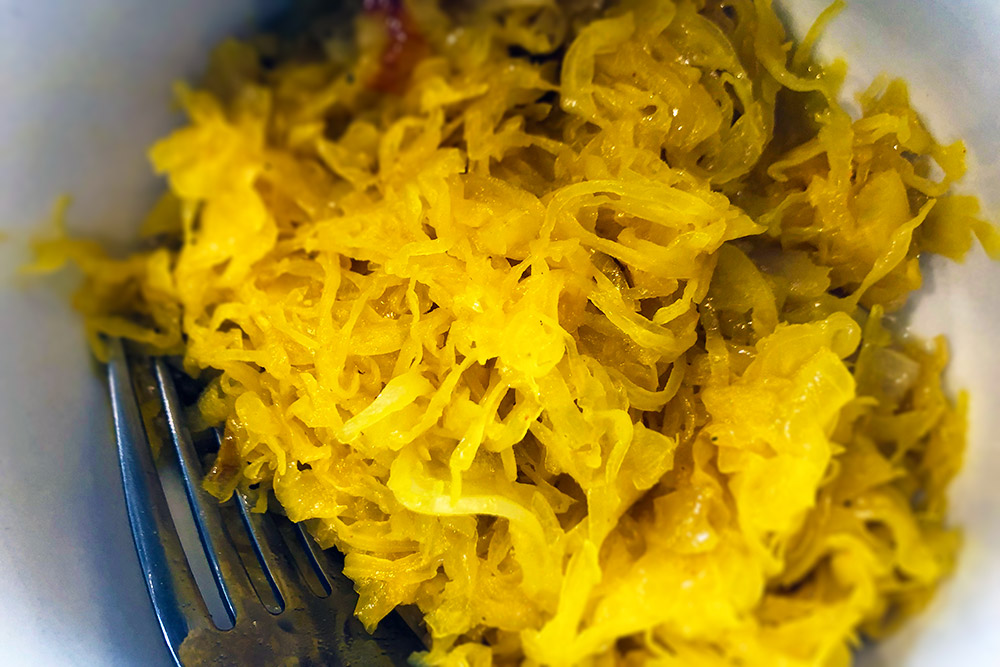Sauerkraut is a type of cabbage that has been finely cut and has undergone fermentation.
It has many nutritional benefits, is a great addition to your diet, easy to add to a meal or experiment with in the kitchen.
Growing up in Serbia, my grandmother and mother used to make a lot of sauerkraut in the winter months. While I’ve continued the tradition, I’ve also experimented with new recipes, and am delighted to share one here!
What are the health benefits of sauerkraut?
1. It’s rich in fiber. Most individuals do not consume enough fiber in their diet. Fiber does not only confer health benefits, but it also helps you feel full faster. Fiber in food contributes to your stomach expanding when the food reaches your stomach. This expansion signals to your body that you are starting to get full, and you are therefore less likely to overeat.
2. It’s a good source of vitamin C (important for immunity) and vitamin K2 (important for heart health and bone health).
3. It is a source of minerals, including iron. The amazing thing is that vitamin C, which is also in sauerkraut, enhances iron absorption.
4. It has probiotics that are beneficial to digestion and absorption of nutrients. Probiotics confer health benefits that extend beyond the GI system, and are implicated in our inflammatory response, mental health, healthy weight and metabolism.
5. Compounds in sauerkraut may have anti-cancer activity. In fact, research indicates that individuals who eat high amounts of white cabbage may be at a lower risk of certain cancers, such as cancer of the pancreas, breast, prostate, stomach, and lungs. Further research is needed to confirm this relationship.
What do I need to know when consuming sauerkraut?
1. If you rinse and soak sauerkraut before you eat it, you can reduce the sodium content.
2. Note, most of commercially available sauerkraut is pasteurized, and hence the bacteria in it are dead. You may find the sauerkraut with probiotics in the refrigerated sections of natural food stores, or you can make your own!
3. Read the labels: avoid preservatives and added sugar.
How do I make sauerkraut?
Sauerkraut is very easy to make. Check out my new recipe for a sauerkraut side dish here. You can make it in under 15 minutes and it requires no special cooking skills. Note, heat can destroy beneficial probiotics, so if you would like to maximize the probiotics you are getting from the sauerkraut, you may want to skip the recipe and eat it raw.

